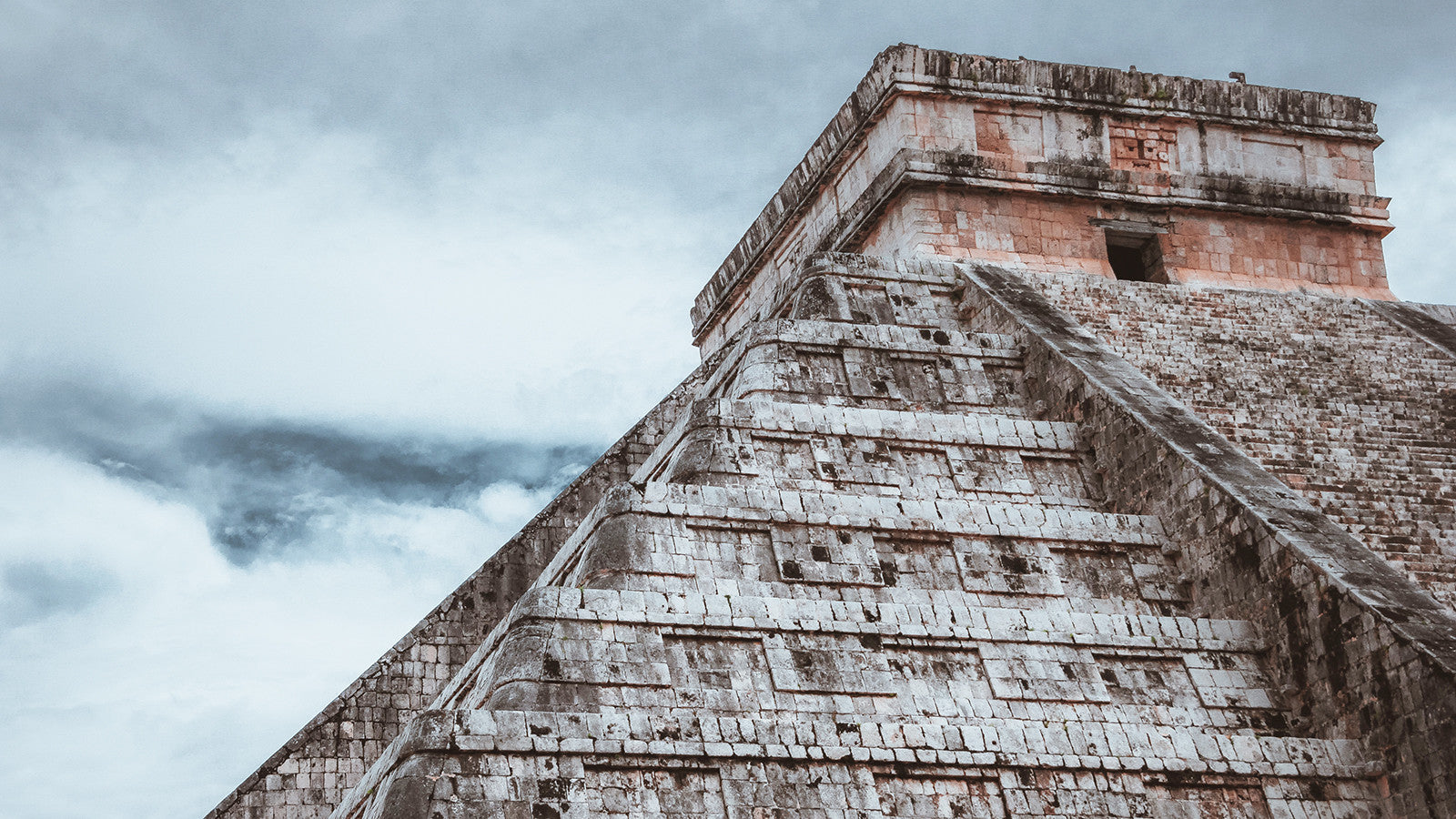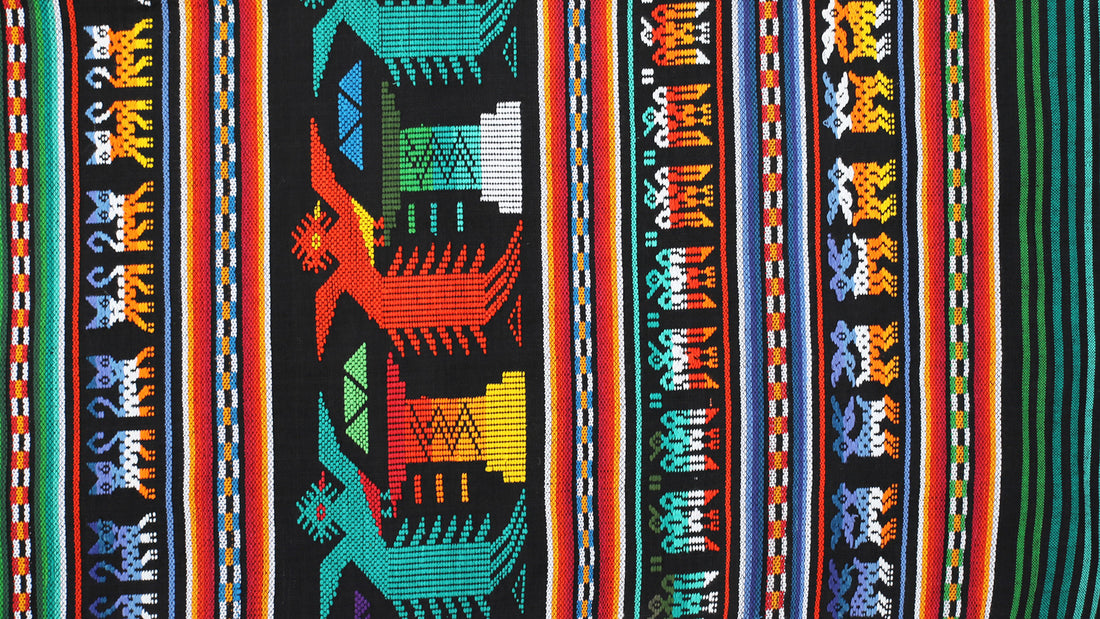
Hand-woven textile. Antiqua, Guatemala
We want to take you on a journey through the history of the Maya - the ancient communities who used to inhabit Mesoamerica and most of the Chichén Itzá peninsula of what is now current-day Mexico and part of Guatemala.
According to archaeological records and artifacts such as arrowheads found within the area, the first humans that inhabited Guatemala can be traced back to sometime between 10,000 and 18,000 B.C. The earliest Mayan civilization was established in about 2000 B.C., where city-states and trade networks flourished.

Ancient Mayan calendar. Image source: gencook.com
The Maya communities are known for a myriad of amazing things, such as developing the Mayan calendar, their stunning temples and stucco architecture, ceramic pottery, a hieroglyphic writing system -- the only full writing system in the pre-Columbian Americas, and several scientific advancements, including astronomy and mathematics.
The Maya used stone age technologies without wheels or domesticated animals, they relied solely on human-power for transportation, managing crops, and building structures.
Sacrificial offerings were a dark, yet an important part of Mayan culture. There were many gods to appease, and the Maya believed that the Sun relied on sacrifice in order to rise. Each day the Sun appeared, it meant the sacrifices for that period had been enough to appease the gods.
Bloodletting, which was eventually condemned by the Bishop of Yucatan, Diego de Landa, was also ceremonious and involved piercing a soft area of the body, then splattering blood on crops, idols, or paper which would then be burned as a sacrifice to the gods. Ensuring fertility was also an important bloodletting ritual, and blood was usually drawn from genitals to secure family lineage. Human blood was believed to have come from the gods, and so the Maya belief system viewed blood-sacrifices as a way to thank the gods for their sacrifice and ensure good fortune for the future.
Whew! Pretty intense, huh?

Mayan Temple. Photo: Jezeal Melgoza
The Maya also had close relationships with neighboring societies: the Aztecs, Mixtecs, and the Teotihuacan. The first major cultural group of Maya were known as the Monte Alto who later became the Olmec culture, which was considered the mother culture of Guatemala.
With regards to the textile history of the Maya, similar to Vietnam and Indonesia, royal women carried the tradition of weaving and it considered it a valuable art form. Weaving ornate clothing was a sign of wealth and prestige.

Artisan weaving on the backstrap loom. San Juan La Laguna, Lake Atitlan, Guatemala
Using a portable backstrap loom, which is still used by weavers today, Mayan women would weave cotton thread, dyed by natural methods using plant, animal, or mineral sources.
While this is a short-version of the vast and incredibly rich history of the Mayan people, we hope it helps provide a glimpse into the culture and art of an amazing community that still holds major influence today!
Our Guatemalan collection features textiles woven by artisans who have passed down the art of weaving through generations to help keep the culture of their ancient Mayan past and present alive. Browse our current collection or sign up for our Tribe newsletter because we have some exciting news on the horizon to share!

